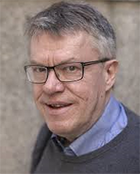The Immigration Policy Turn: The Danish Social Democratic Case
By professor Peter Nedergaard (Department of Political Science) at socialeurope.eu on 25
May 2017.
 The Danish Social Democratic Party (SD) has recently changed course on immigration policy in a more restrictive direction. This change of policy is marked and should attract international interest. There are also certain indications that a similar change is in the pipeline in the other Nordic Social Democratic parties.
The Danish Social Democratic Party (SD) has recently changed course on immigration policy in a more restrictive direction. This change of policy is marked and should attract international interest. There are also certain indications that a similar change is in the pipeline in the other Nordic Social Democratic parties.
This policy change already seems to have borne fruit for the SD. While support for other European Social Democratic parties is generally in free fall, the Danish party is gaining in favour. The odds point to a Social Democratic take-over by the next general election (replacing the present center-right government) with the party chair, Mette Frederiksen, as prime minister.
Several factors lie behind the Social Democratic policy change on immigration.
First, welfare state ideology. SD believes itself to be the prime sponsor of the Danish welfare state. As various scholars have pointed out, there is a fundamental contradiction between a very liberal immigration policy and the survival of the welfare state. A welfare state simply cannot afford anything other than a restrictive immigration policy if welfare arrangements are to remain at a reasonable level. This has now been fully agreed upon by the Danish Social Democratic leadership.
The contradictions between a liberal immigration policy and the continued existence of the welfare state has most recently been emphasized in an analysis from the Danish Ministry of Finance, which shows that immigration from third world countries costs the Danish exchequer more than DKK 30 billion (€4bn) a year. This, of course, means a loss of public money which cannot at the same time be spent on the welfare state’s core activities.
In its latest manifesto, “United on Denmark”, SD describes the dilemma as follows: ‘As Social Democrats we believe that we must help refugees, but we also need to be able to deliver results in Denmark via local authorities and for the citizens. For the Social Democratic Party, it is about finding the balance between helping people in need and ensuring the coherence of our country, and continuing to be able to afford the high level of welfare provision that characterizes our society. […] We have therefore been tightening asylum rules and increased requirements for immigrants and refugees. And we will continue to pursue a tight and consistent asylum policy, which makes Denmark geared to handling refugee and migratory pressures’.
Another factor behind the policy change is due to the party’s history. A leading SD member of the Danish Parliament, Mattias Tesfaye, (trained as a mason and with a Danish mother and an Ethiopian father) has recently published the book Welcome, Mustafa where he reconstructs the history of Social Democratic immigration policy. In this reconstruction, genuine Social Democrat grass-roots favor a tight and restrictive immigration policy, which, according to Tesfaye, regrettably was departed from in the period from the early 1980s until today. According to this reconstruction, a very liberal immigration policy and true social democracy relate to each other like fire and water.
Unfortunately, according to Tesfaye, the Social Democratic Party missed this fundamental truth for several decades when it was seduced by academic proselytes. With Frederiksen (with her working class roots) as Social Democratic chairman and backed up by the strong chairman of the parliamentary group, Henrik Sass Larsen (also with working class roots), the criticism of a too liberal immigration policy has regained ground and become a rediscovered part of the Social Democratic DNA. The same criticism was for years voiced by Social Democratic mayors from the mainly working class suburbs west of Copenhagen that contain many immigrants. Over decades, their voice was suppressed by SD intellectuals, according to Tesfaye.
The third factor behind the policy change is due to the simple desire for survival. The Social Democratic leadership has observed how traditional working class voters have gradually left social democratic parties for more anti-immigration parties in Denmark as well as in other European countries. In Denmark, the Danish People’s Party (DF) has indeed taken a large part of the working-class vote, which would otherwise have been a safe bet for SD. At the same time, several Social Democratic leaders have mocked DF, which, among other things, has been called ‘not house-trained’. In many workers’ ears, however, it has been an insult directed against them.
Electoral research in Denmark has shown that many recent general elections have been decided on the basis of which parties voters expect to deliver the highest standards of non-liberal immigration policy. The latest election, in 2015, turned in favor of the present center-right government, because voters thought it would provide a more restrictive immigration policy than the former Social Democrat government under Helle Thorning-Schmidt. In some countries, social democratic parties have become tiny with less than ten per cent of the votes. The SD change of course on immigration policy is, therefore, designed to avoid ending up in a similar situation in Denmark. Opinion polls so far indicate that it will succeed. This is also why the traditional pro-liberal immigration fraction within SD has almost disappeared. The main opposition now comes from the SD’s coalition partners in the Danish Parliament.
The big question is, therefore, how hard the Social Democratic Party wants to stick to the new course when it comes under pressure from the pro-liberal immigration Social Liberal Party, which will become part of the parliamentary coalition for a likely future Social Democratic government. Is the tight restrictive immigration policy a SD red line – or will the party recognize the benefits of a liberal immigration policy when power is within reach? Only time will show.
